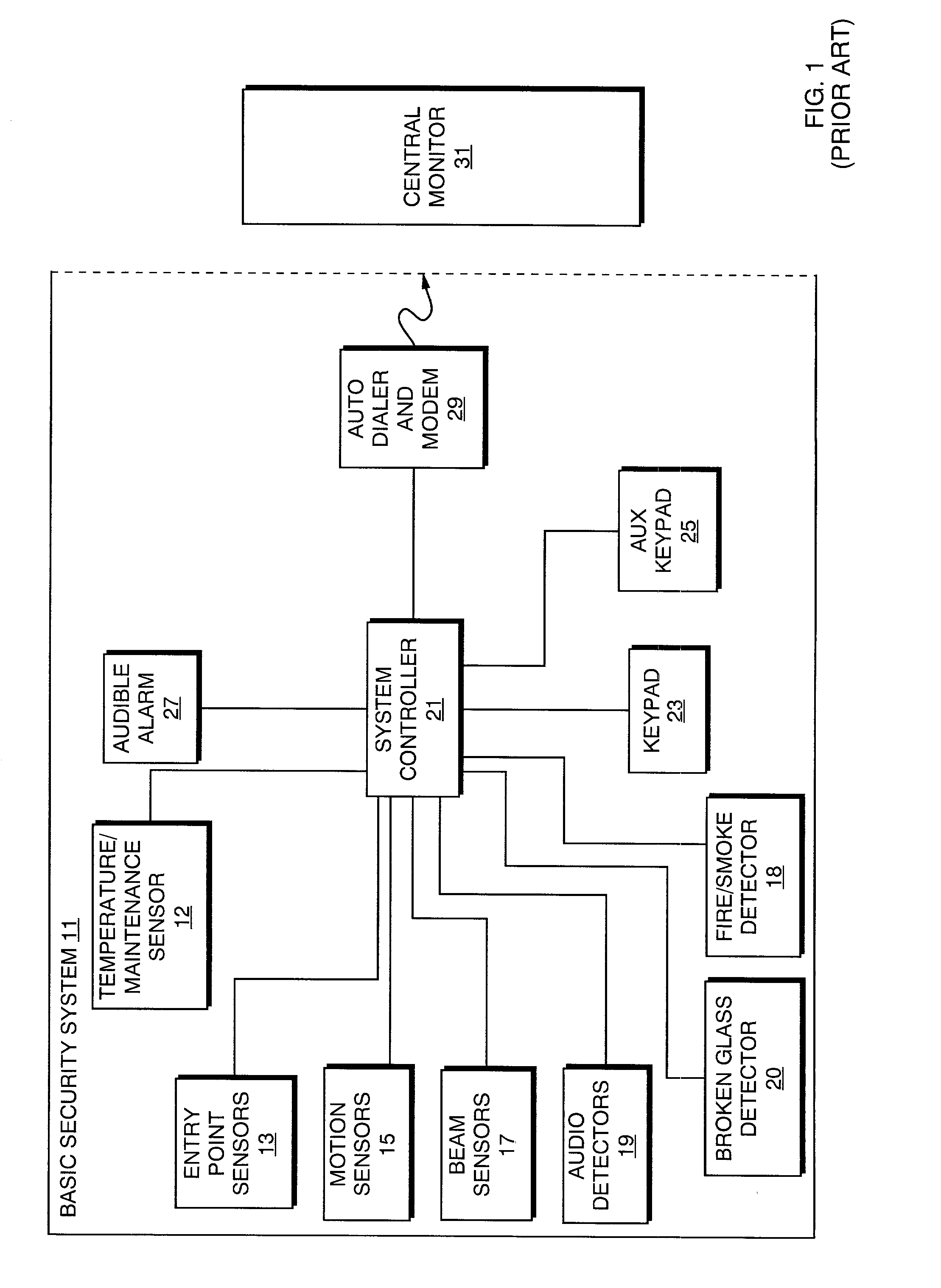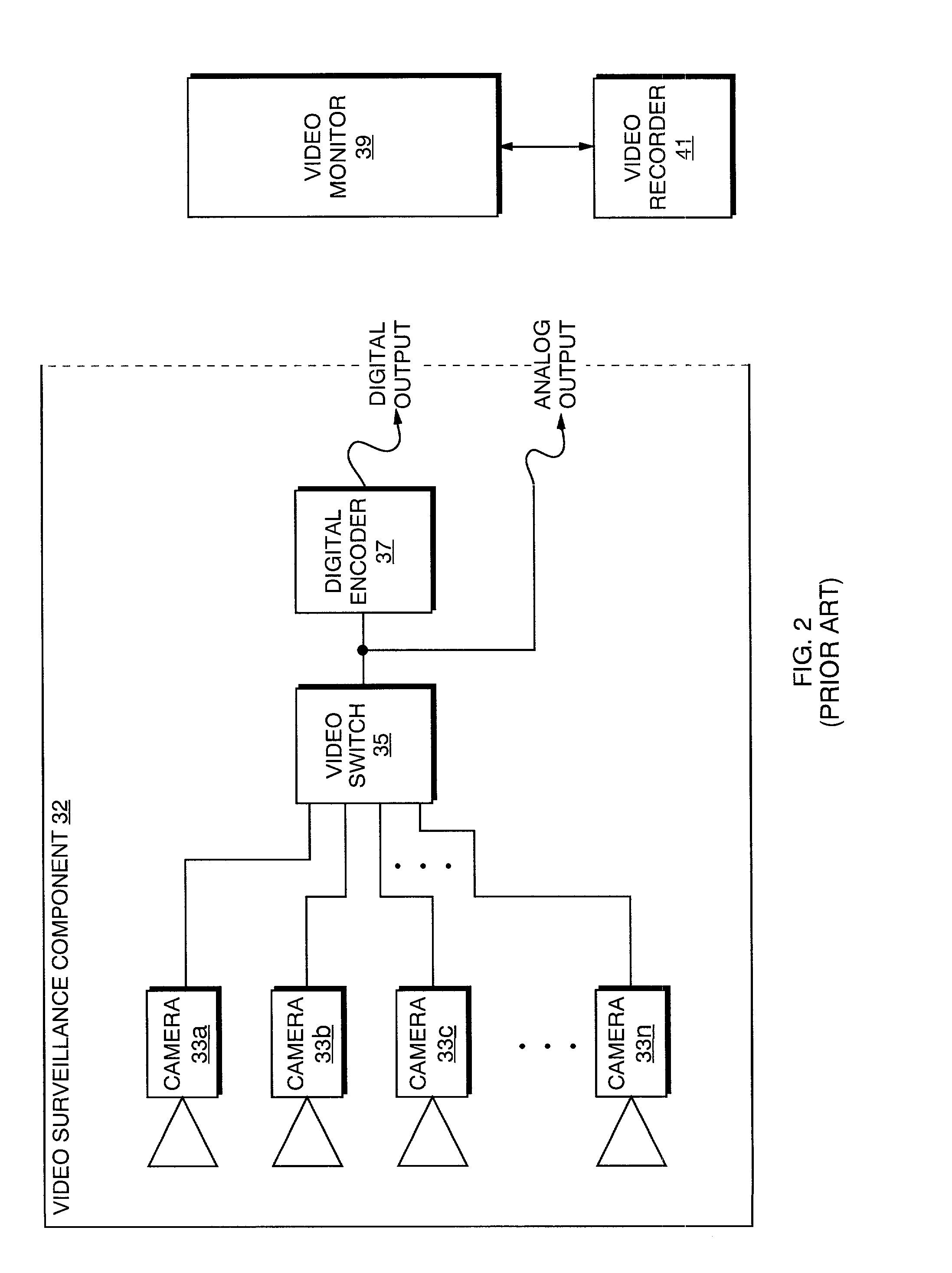Internet based emergency communication system
a communication system and emergency communication technology, applied in the field of emergency communication systems, can solve problems such as the inability of the remote monitoring entity to accurately communicate, the false alarms that may be caused, and the belief of neighbors that the alarm indication is "false"
- Summary
- Abstract
- Description
- Claims
- Application Information
AI Technical Summary
Problems solved by technology
Method used
Image
Examples
Embodiment Construction
[0023] The present invention relates to security systems and methods, and more particularly, to security systems and methods using local video surveillance combined with transmission of recorded data such as video or audio sequences to an internet website from the secured premises. Throughout the drawings, like reference numerals are used to identify particular elements of the described systems and methods.
[0024] FIG. 1 is a block diagram of a prior art basic security system 11 for home or commercial use. Basic security system 11 includes temperature or other maintenance function (i.e. low heating fuel) sensors 12 and entry point sensors 13 that may be in the form of switches for detecting an open event at an entry point such as a door or a window. Basic system 11 may also include motion sensors 15 for detecting movement within the protected premises in the event that an entry point sensor is bypassed without being activated. In addition or as an alternative to motion sensors 15 are...
PUM
 Login to View More
Login to View More Abstract
Description
Claims
Application Information
 Login to View More
Login to View More - R&D
- Intellectual Property
- Life Sciences
- Materials
- Tech Scout
- Unparalleled Data Quality
- Higher Quality Content
- 60% Fewer Hallucinations
Browse by: Latest US Patents, China's latest patents, Technical Efficacy Thesaurus, Application Domain, Technology Topic, Popular Technical Reports.
© 2025 PatSnap. All rights reserved.Legal|Privacy policy|Modern Slavery Act Transparency Statement|Sitemap|About US| Contact US: help@patsnap.com



